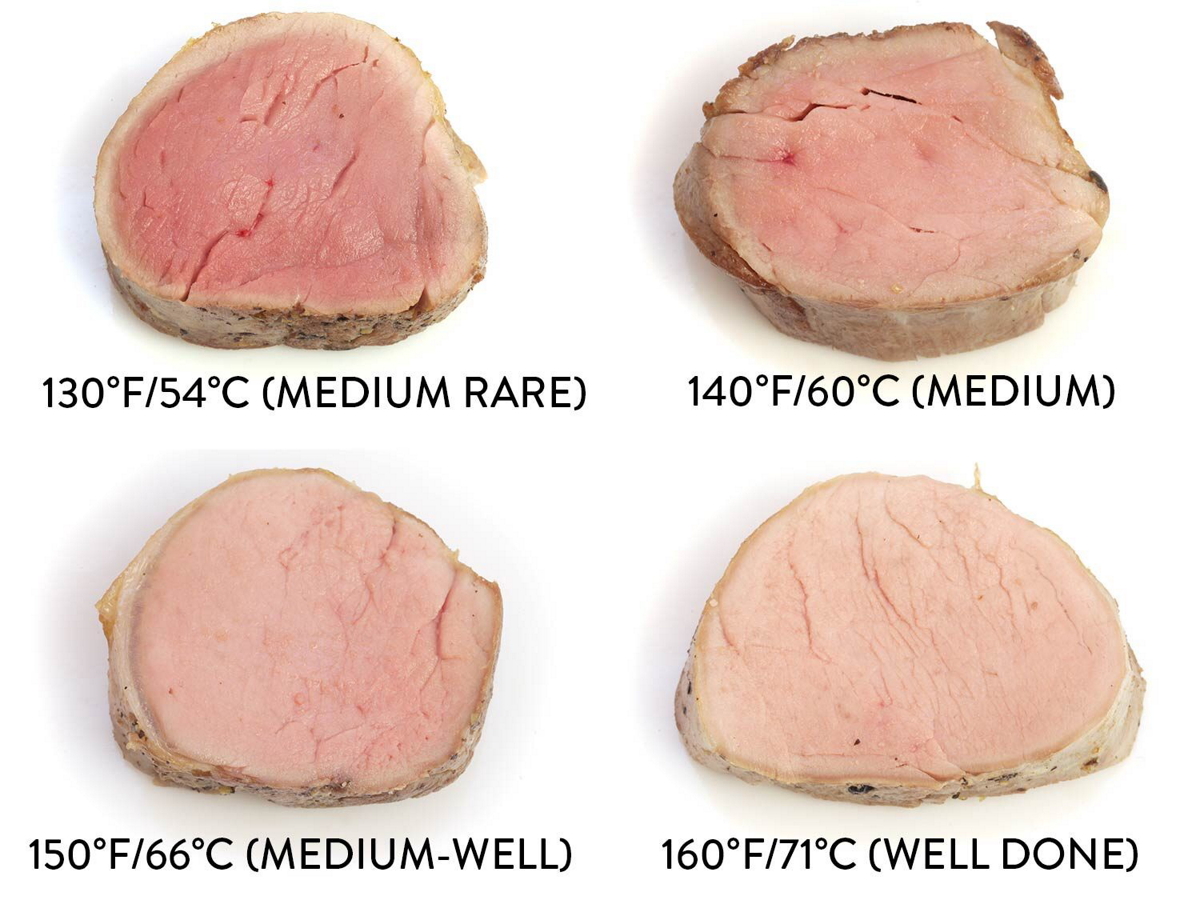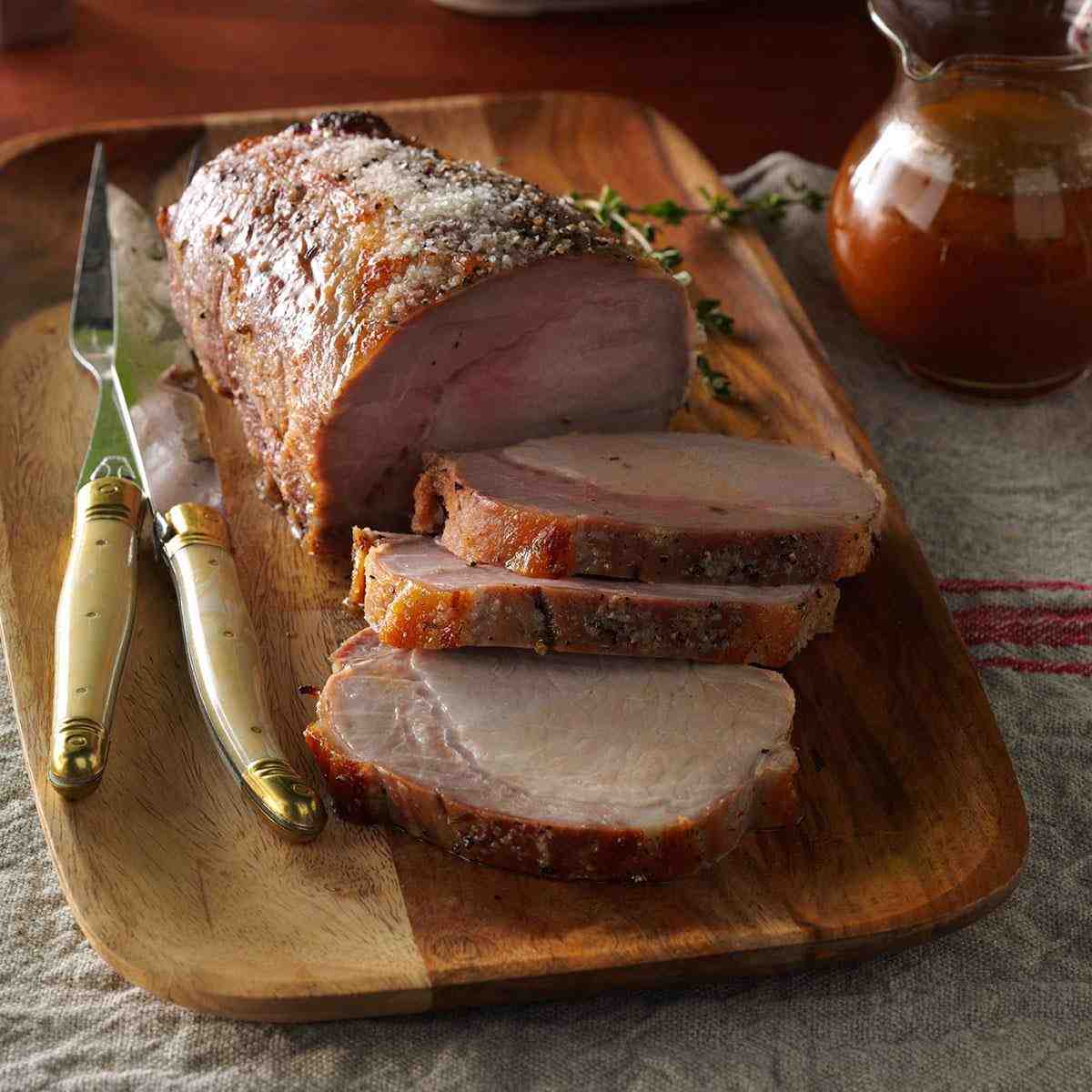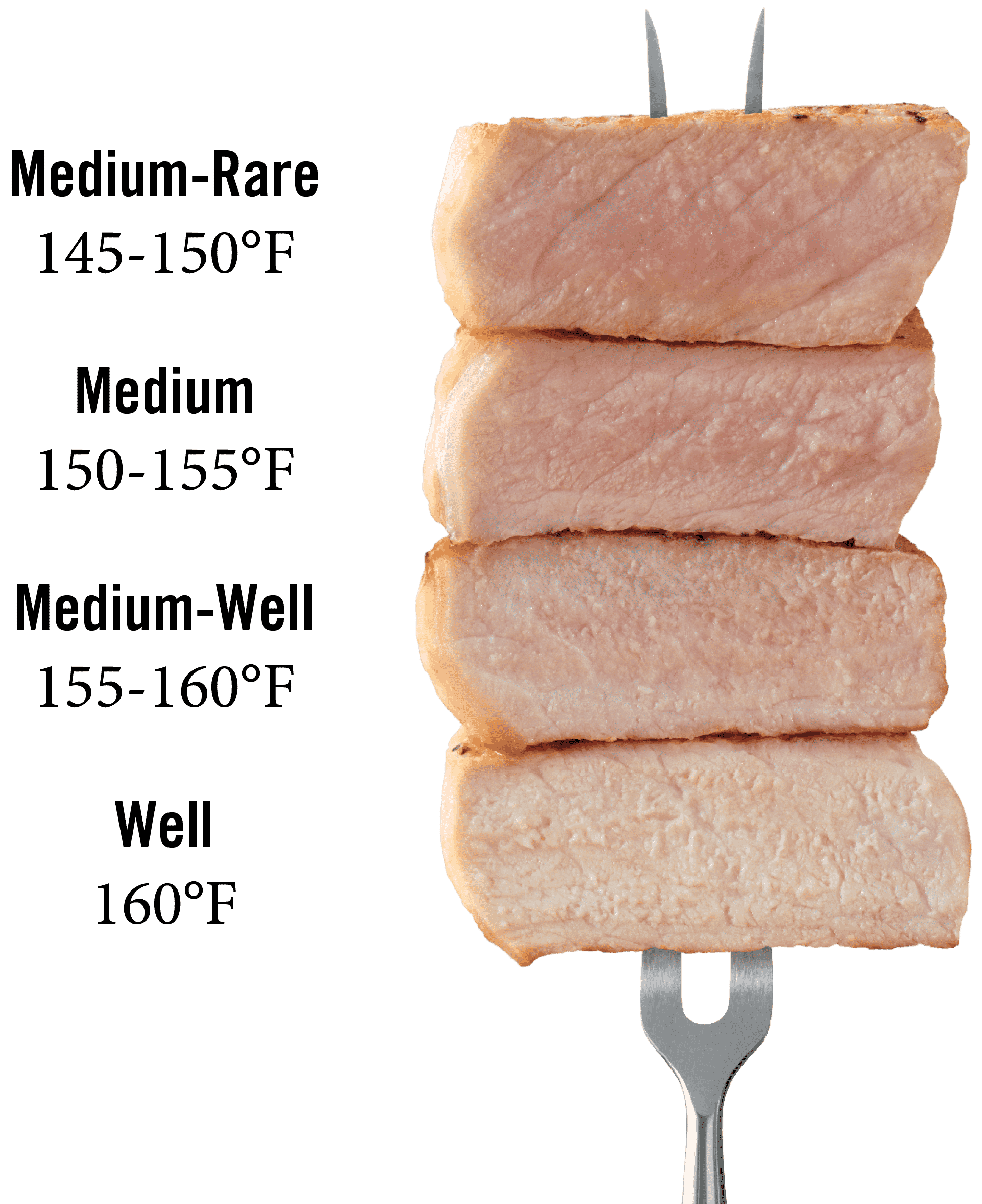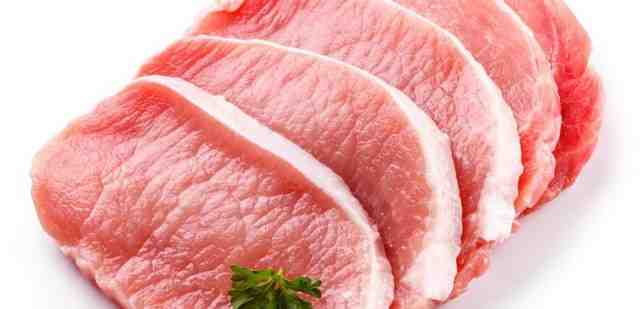Raw meat can contain bacteria that cause food poisoning, and accordingly, eating undercooked pork or chicken can lead to food poisoning. If you experience symptoms such as abdominal pain, diarrhea, and fever after eating undercooked meat, seek immediate diagnosis from a medical facility.
How long does pork need to be at 145?

But now the USDA says if raw pork is cooked to 145 degrees and left to rest for three minutes, it’s safe to eat, even if it’s a little pink. The agency says the only reliable indicator of safe meat is its temperature, measured with a food thermometer, and its appearance is not a reliable indicator of temperature.
At what temperature do you cook a tri-tip with pork? After rinsing your pork and patting it dry, rub it in with your seasoning mix. Then bake at 350 degrees until it reaches an internal temperature of 145°F. If you’re cooking your roast at room temperature, this should only take about an hour.
How long do you sous vide a tri-tip steak?
Through lots of experimentation, we found that cooking the tri-tip roast beef at 131F for 6 hours is the perfect combination. By allowing the Tri Tip to act for 6 hours, the connective tissue (collagen) is broken down, resulting in an extremely tender steak.
How long to sous vide tri tip medium-rare?
| result | temp | time |
|---|---|---|
| Rarely | 124-128 degrees F | 1-3 hours |
| Half done | 129-133 degrees F | 1-3 hours |
| Middle | 134-138 degrees F | 1-4 hours |
| mediocre | 139-142 degrees F | 1-4 hours |
How long do you sous vide a 4lb tri-tip?
Sous vide tri tip
- Prep time 5 minutes.
- Practical cooking time 5 minutes.
- Sous vide time 6 hours.
- Total time 6 hours 10 minutes.
What temperature do you sous vide tri-tip?
Place the bag of roast in the pot and cook at 134° until an instant read thermometer reads 130° at the thickest part, about 1 hour and 45 minutes; If necessary, seal the bag using the same procedure as above. Adjust heat as needed to maintain water temperature.
Can you over cook tri-tip in sous vide?
Sous Vide Tri-Tip: Benefits Cooking a Tri-Tip sous vide is a fantastic way to achieve a perfect result. Sous vide circulators are great at maintaining a specific temperature so your food can be cooked to your preferred doneness without the risk of overcooking.
How long can I sous vide a tri-tip?
Cook Time and Temperature My preferred sous vide cooking temperature and time for a medium-rare tri-tip roast is 132F/55.5C for 8 hours. 6 hours is pretty good too (if you have a good cut of beef) or up to 10 hours.
How long is too long to sous vide tri-tip?
What happens if the Tri-Tip cooks for more than 24 hours? Sous vide cooking, I’ve spent up to 48 hours using Tri-Tip with great results. The value of sous vide cooking is that you don’t overcook your proteins unless you overcook. Maximum is 72 hours.
Can you over cook tri tip in sous vide?
Sous Vide Tri-Tip: Benefits Cooking a Tri-Tip sous vide is a fantastic way to get the perfect result. Sous vide circulators are great at maintaining a specific temperature so your food can be cooked to your preferred doneness without the risk of overcooking.
Can I sous vide tri tip for 24 hours?
For a more traditional texture, you can cook it until just heated through, usually 3 to 4 hours. Eight hours will give you a more tender but still chewy result and 24 hours will give you super tender meat. I usually prefer somewhere in the 10 to 12 hour range.
Does all pork have trichinosis?

Few cases of trichinellosis have been reported in the United States over the past 40 years, and the risk of trichinellosis from commercially raised and properly prepared pork is very low. However, eating undercooked game, especially bear meat, puts you at risk of contracting this disease.
How common is trichinosis in pork? Is trichinellosis common in the United States? Trichinellosis used to be more common and was usually caused by eating undercooked pork. However, infection is relatively rare today. Between 2011 and 2015, an average of 16 cases per year were reported.
When was the last case of trichinosis?
Three outbreaks of locally acquired trichinellosis have been reported since 1975 (7), the last reported outbreak being in 1981; All have been linked to bear meat consumption, but the etiological agents have not been identified at the species level. Since then, no outbreaks were reported until the end of 2016.
How many cases of trichinosis in the US each year?
It is reported to cause about 10,000 human infections worldwide every year. Due to improvements in commercial pig husbandry, the major source of trichinellosis worldwide, it has become a rare disease in the United States. About 10 to 20 cases have been reported annually in the United States for the past several years.
Does all bear meat have trichinosis?
People can get trichinellosis from eating infected meat that hasn’t been adequately cooked. ALL bear meat should be considered infected. Pets can also get trichinellosis if they are fed undercooked or undercooked meat.
Does store bought pork have trichinosis?
It’s still possible to get trichinosis from eating undercooked pork, but the risk from cultured meat is very small.
Does trichinosis go away?
Trichinosis is not usually serious and often gets better on its own, usually within a few months. However, fatigue, mild aches, weakness, and diarrhea can last for months or years. Depending on your symptoms and the severity of the infection, your doctor may prescribe medication. Antiparasitic drugs.
Does all pork have Trichinella?
Most cases are due to eating undercooked game meat such as bear, while some other cases are due to eating pork products. The parasite is not found in domestic pigs raised in captivity but can be found in pigs raised outdoors in close contact with wild animals and rodents.
Are worms common in pork?
Abstract. Three parasites pose a public health risk from eating raw or undercooked pork, namely: Trichinella spiralis, Taenia solium and Toxoplasma gondii. Inspection procedures, when performed according to prescribed methods, are effective in eliminating most risks from T.
What percent of pork has trichinosis?
Much of the improvement in domesticated pork comes from controlling its food sources, but such management is not possible with wild boar because they are, well… wild. So how common is Trichinella infection in wild boar? It varies, with one study showing an infection rate of 5.7% and another 13%.
Can pork chops be a little pink on the inside?

It’s okay to see just a little pink on the inside of your pork chops. To be on the safe side, check the inside temperature with a thermometer. The United States Department of Agriculture (USDA) recommends cooking pork to 145 degrees Fahrenheit (medium-rare) and pausing for three minutes after removing it from the heat.
Can pork be a little pink when you eat it? A Little Pink Is Okay: USDA Revises Pork Cooking Temperature: The Two Ways The U.S. Department of Agriculture has lowered the recommended cooking temperature for pork to 145 degrees Fahrenheit. That, they say, might make some pork look pink, but the meat is still safe to eat.
Is pink in the middle of pork OK?
Pink is fine as long as the meat is at a pork-safe temperature, rarely there can be problems. Pork safety begins with cooking the meat to 145°F, as measured by a food thermometer placed at the thickest part of the meat, and then letting it sit for at least three minutes before eating.
Does pork need to be fully cooked?
Nutritionists — and the USDA — have recommended cooking the meat until it reaches an internal temperature of around 160°F or medium for many years, which can result in slightly pink meat. But some restaurant chefs across the country are taking it a step further and cooking pork medium-rare, or at around 145°F.
Why is cooked pork still pink?
These same nitrates can bind to proteins in meat, preventing them from releasing oxygen molecules as they normally would during the cooking process. This keeps the proteins oxygenated and retains a red or pink color even when the meat is fully cooked.
What happens if you eat slightly underdone pork?
It’s not a good idea to eat raw or undercooked pork. The meat can harbor parasites such as roundworms or tapeworms. These can cause foodborne illnesses such as trichinosis or taeniasis. Although rare, trichinosis can lead to serious complications, sometimes fatal.
Can you eat slightly undercooked pork?
Both uncooked or raw pork and uncooked pork are unsafe to eat. Meat sometimes contains bacteria and parasites that can make you sick. Thorough cooking kills any germs that may be present.
How long does it take to get sick from eating undercooked pork?
Abdominal symptoms may appear 1–2 days after infection. Other symptoms usually begin 2–8 weeks after eating contaminated meat. Symptoms can range from very mild to severe and are related to the number of infectious worms consumed in meat.
How do you know if pork is undercooked?
Although thermometers are the best way to tell if your pork is done, you can tell the pork’s doneness by the color of the juice that comes out when you poke a hole in it with a knife or fork. If the juice that comes out of the pork is clear or very slightly pink, the pork is done cooking.
What color should cooked pork be?
| pork quality | End point temperature and time at that temperature | |
|---|---|---|
| 63°C (145°F), 3 min | 77°C (170°F), 1 sec | |
| normal | pink | Tan/White |
| Normal-injected | pink | Tan/White |
| hp | Slightly pink | Tan/White |
Is it OK to eat pork that’s slightly pink?
That color doesn’t indicate anything shameful—at 145°F, your pork is a medium-rare temperature. You would expect to see some pink in a medium rare steak, so don’t be surprised to find it in your pork chops! If the pink color freaks you out, you can continue cooking it until it reaches 155°F.
What are the symptoms of trichinosis?

What are the symptoms of trichinosis? A few days after eating the roundworm larvae, they mature and begin to multiply; During this time, symptoms can include nausea, vomiting, diarrhea, fever, fatigue, and abdominal pain.
How to get rid of trichinosis? Antiparasitic drugs are the first line of treatment for trichinosis. If the Trichinella parasite is caught early, albendazole (Albenza) or mebendazole (Emverm) may be effective in eliminating the worms and larvae in the gut. Mild gastrointestinal side effects may occur during treatment.
How do you know if you have trichinosis?
These symptoms usually include diarrhea (soft stools), nausea (stomach feeling tired), tiredness and abdominal pain. Other symptoms can appear 2-8 weeks after infection and can include fever, headache, chills, sore muscles, pain and swelling around the eyes.
What is the incubation period for trichinosis?
The usual incubation period for trichinellosis is 8-15 days. After incubation in the gut, the first symptoms are most commonly gastrointestinal symptoms due to invasion of the gut wall by the juvenile larvae.
How is trichinosis treated?
| drug | Dose for adults and children |
|---|---|
| albendazole | 400 mg orally twice a day for 8 to 14 days |
| mebendazole | 200 to 400 mg orally three times a day for 3 days, then 400 to 500 mg orally three times a day for 10 days |
What are 5 signs and symptoms of trichinosis?
Headache, fever, chills, cough, swelling of the face and eyes, joint and muscle pain, itchy skin, diarrhea or constipation can follow the first symptoms. If the infection is severe, patients may have trouble coordinating movements and have heart and breathing problems.
What is trichinosis and how do you get it?
Trichinosis is a disease caused by the roundworm Trichinella spiralis. The parasite larvae can migrate and nest in the muscles. People get this disease mainly from eating game that is not properly cooked. This disease is not common in Minnesota.
How do you get rid of trichinosis?
Antiparasitic drugs. This is the first line of treatment for Trichinella infections. If the infection is caught early, taking albendazole or mebendazole can get rid of the worms and larvae in your gut. Mild side effects may occur during Trichinella treatment.
Does trichinosis go away on its own?
In most cases, trichinosis will go away on its own. This can take a few months. However, some symptoms, such as fatigue, diarrhea, and mild aches and pains, can last for months or even years. You may not need to see your doctor if you have a mild case with no symptoms.
Is trichinosis curable in humans?
Trichinosis is treated with antiparasitic drugs and can be fatal if severe cases are not treated. There is no treatment once the larvae lodge in the muscles, painkillers can help.
What can happen if you don’t get treated for trichinosis?
Except in severe cases, complications associated with trichinosis are rare. When infested heavily, larvae can migrate to vital organs and cause potentially dangerous, even fatal, complications including: Myocarditis – an inflammation of the myocardium, the thick layer of muscle lining your heart.
Can pork be a little bloody?

Point one: it’s not blood. Blood comes from veins and other blood vessels. The pink sap of a muscle contains myoglobin. Point two: It’s perfectly safe to eat pink pork, and has been for many, many years.
Is Pork Bloody When Cooked? The slogan worked in terms of colour, because pork cooked at 160 degrees has a pale, sluggish white-grey colour. In contrast, pork cooked at 145 degrees stays distinctly pink. It’s not “rare” like raw beef, but the pork’s color can only be described as pink-pink-pink.
Can pork be pink with blood?
There is a common misconception that pork can only be dry cooked to be safe. This can lead people to believe that the meat is unsafe to eat when they see pink. However, that is not true at all! Pork can be cooked pink and still be safe for consumption.
Can you eat pork pink with blood?
In short, yes! We used to fear pink pork because of a parasite known as trichinosis, but the risk of contracting it is now virtually non-existent. As with beef, pork temperatures are designed to cook the meat long enough to eliminate E. coli, which means it may have a little color in the middle.
Can pork be pink when fully cooked?
In a word, yes. The pink color does not mean the meat is undercooked. In fact, when pork is cooked to the recommended internal temperature of 145 degrees Fahrenheit, it’s normal for it to be pink in the center. Even when the pork is cooked through, it may still retain a hint of pink.
How do you know if pork is undercooked?
The safe internal pork cooking temperature for fresh cuts is 145°F. To properly check doneness, use a digital cooking thermometer. Freshly cut lean meats such as pork chops, roast pork, pork loin, and tenderloin should measure 145°F to ensure the maximum amount of flavor.
Is it OK to eat pork that’s slightly pink?
That color doesn’t indicate anything shameful—at 145°F, your pork is a medium-rare temperature. You would expect to see some pink in a medium rare steak, so don’t be surprised to find it in your pork chops! If the pink color freaks you out, you can continue cooking it until it reaches 155°F.
How can you tell if pork is underdone?
Although thermometers are the best way to tell if your pork is done, you can tell the pork’s doneness by the color of the juice that comes out when you poke a hole in it with a knife or fork. If the juice that comes out of the pork is clear or very slightly pink, the pork is done cooking.
Is a little red in pork OK?
The USDA said its Food Safety and Inspection Service has determined that cooking pork to a temperature of 145 degrees and letting it sit for three minutes is just as safe as cooking it at a higher temperature. The change means a piece of pork can still look pink when it hits 145 degrees, and that’s okay, according to the USDA.
Does pork need to be fully cooked?
Nutritionists — and the USDA — have recommended cooking the meat until it reaches an internal temperature of around 160°F or medium for many years, which can result in slightly pink meat. But some restaurant chefs across the country are taking it a step further and cooking pork medium-rare, or at around 145°F.
Why is cooked pork still pink?
These same nitrates can bind to proteins in meat, preventing them from releasing oxygen molecules as they normally would during the cooking process. This keeps the proteins oxygenated and retains a red or pink color even when the meat is fully cooked.
What color should pork Be?
Such guidelines have not been established for pork products. While beef follows a red to pink to brown pattern when heated, pork changes color from pink to less pink to light brown or white.
How can you tell if pork is done? To properly check doneness, use a digital cooking thermometer. Freshly cut lean meats such as pork chops, roast pork, pork loin, and tenderloin should measure 145°F to ensure the maximum amount of flavor. Ground beef should always be cooked to 160°F.
Sources :
